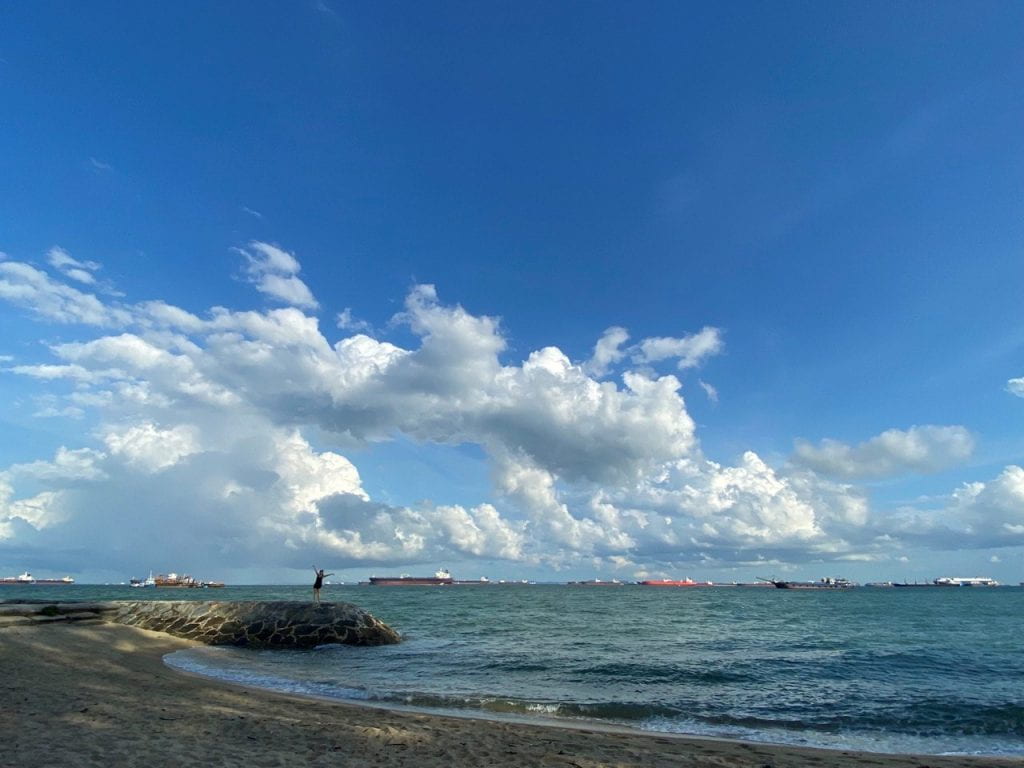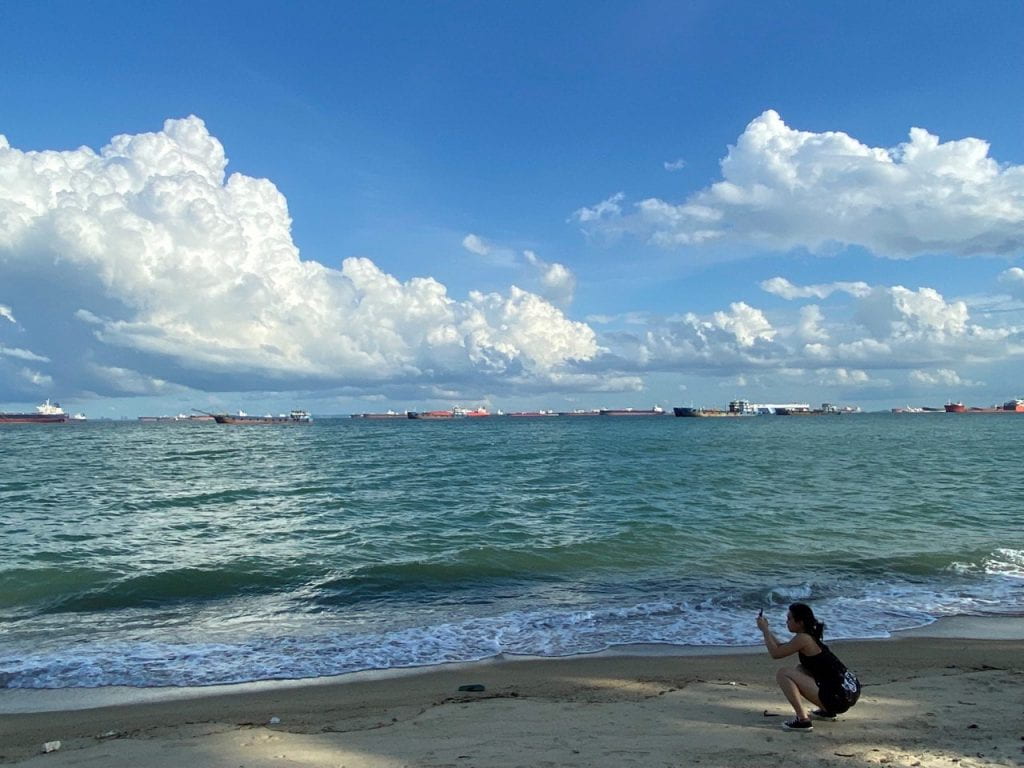Photo Essay: Reflections on Singapore’s Green Spaces

Chinatown, Singapore. January 2022.
Although Amherst offers few courses on urban studies, I’ve always been fascinated by our urban environment and topics such as the social life of cities and the intersection between sustainability and urbanization. Singapore has proved to be the perfect setting for me to explore these topics. My urban studies course at Yale-NUS is unique for its breadth and comparative focus, with each class serving as a case study of a different city around the world. Our final city was Singapore, with a discussion on urban futures. Examining multiple cities in tandem allowed me to gain a deeper appreciation of the unique features of Singapore’s development. Singapore’s rapid economic growth and its balance with environmental sustainability, has been largely attributed to the government’s meticulous planning. We also learned the particular developmental challenges the island nation was facing: limited land capacity, new and disruptive technologies, as well as the potential consequences of its extensive planning, such as loss of long-term resilience and social democracy.
I am particularly interested in how Singapore plans, structures, and makes use of its green spaces. In this photo essay, I hope to reflect on my lived experiences in the “Garden City” by documenting some of the green spaces I explored during the semester.
1. Macritchie reservoir and treetop walk


One of the first green spaces I visited was Macritchie, Singapore’s oldest reservoir. It was refreshing to be fully immersed in nature after spending my first two weeks in the city and it felt especially endearing when we spotted monkeys and other wildlife along the trail.


Of course, the park also contained many manmade/curated aspects, such as the neatly paved hiking trails and the iconic suspension bridge enabling tourists to walk through the treetops. I appreciated these structures, though, because they made the park much more accessible without significantly altering the natural landscape (from a tourists perspective, at least). Although neither my friend or I had visited the area previously, we were able to navigate the paths easily.




Views of the Macritchie reservoir
2. Clementi Forest




The second green space I explored was Clementi forest, a unique hiking area located near Ngee Ann Poly. I was immediately awed by the forest’s raw, untouched beauty. Cities I grew up in, such as Beijing and Shanghai, also dedicated vast, green spaces for public access. However, from their manicured lawns to the neatly printed signs and evenly spaced trash cans, such areas constantly reminded you of the city’s external presence. Wandering the trails of Clementi forest, I truly forgot that I was in a large metropolitan city.


Overall, Clementi forest is quite undeveloped compared to the other green spaces I visited. Unlike Macritchie Reservoir, it does not have a proper gate or entrance. Instead, we entered the forest from a small opening hidden behind a bus stop. The trails were mostly basic footpaths and often muddy. It would have been difficult to navigate without a friend who was familiar with the terrain.


Exploring the forest


Celebrating our hike!
3. East Coast Park

East Coast Park is one of Singapore’s largest parks and is built entirely on reclaimed land. It stretches along the southeast coast of the island and offers an exhilarating ocean view.


Upon reaching the park, I quickly noticed the level of effort and planning involved in its construction, and immediately understood why it was a popular destination for both tourists and locals. Most of the coastline was accessible to visitors and is lined with camping sites, with amenities like barbeque pits, sports areas, as well as restaurants and rest stops. My friend and I rented bikes at a kiosk and cycled along the main road, which is over 15 km long and stretches along the entirety of the park. We returned our bikes at another kiosk near the end of the park and I appreciated how accessible the park was.
Touring East Coast reminded me of an important theme in my urban studies class on the social functions of urban morphology – particularly its green spaces. These public areas serve as important gathering points for people of all ages and backgrounds in society, while people living in cities without such planned areas may feel unwelcome or even marginalized, such as the low income migrant workers in Dubai.

Extensive intervention and renovation of the area also had observable environmental and ecological impacts. The horizon was almost entirely lined with ships, and many parts of the beach were scattered with rubbish and debris. My friend also discussed the pollution associated with Singapore’s oceans and beaches. My impression of Singapore had always been one of natural harmony and sustainability, so it was interesting to gain insight into its unique environmental and ecological challenges.

4. Curated “green” spaces
Gardens by the Bay is a nature park located in Singapore’s downtown area and is one of its most popular and iconic tourist attractions. I visited its two main conservatories, the Cloud Mountain and the Flower Dome, as well as Supertree grove:


The Cloud Mountain. The conservatory is situated in a huge class biome and contains the world’s second tallest indoor waterfall.


The Flower Dome, with Marina Bay Sands in the background. The conservatory houses flora from a range of habitats, from the Mediterranean to the South African savannahs.

Gardens by the Bay was both awe-inspiring and thought-provoking. It’s definitely one of the most creative and artistic ways of incorporating nature into an urban landscape. On the other hand, I wondered whether the space, with its curated landscapes and extreme futuristic architecture, can truly be considered “green”. GBTB was designed to be highly sustainable and aims to educate the public about the importance of environmental sustainability. However, I found that many tourists, including myself, often failed to fully appreciate the space and such efforts. It was only after talking to my friends – locals who had made multiple visits or conducted research on the space – that I began to recognize both its sustainable efforts, as well its more controversial aspects. For instance, what are the ecological impacts of transplanting rare flora from distinct habitats? Is GBTB really a public green space when it charges such a high entrance fee, catering toward a certain community while excluding another? Researching this space has opened my eyes to how much more there is to understand and uncover.
5. Green spaces in the community


View of the city taken on an overhead bridge near Dempsey, and after my class at NUS. Singapore boasts of many beautiful, awe-inspiring green spaces, but my deepest impressions of the city were shaped by the places which I encountered and immersed in on a daily basis.


Spotting a terrapin in the ecopond during the first day of orientation! I loved how I could be connected to nature without leaving campus. Many local students are used to the red junglefowl, Jimmy Nugget, roaming the courtyard, or the red eared sliders sunbathing in the ecopond. But for me, these chance encounters with wildlife on campus were some of my most cherished moments.